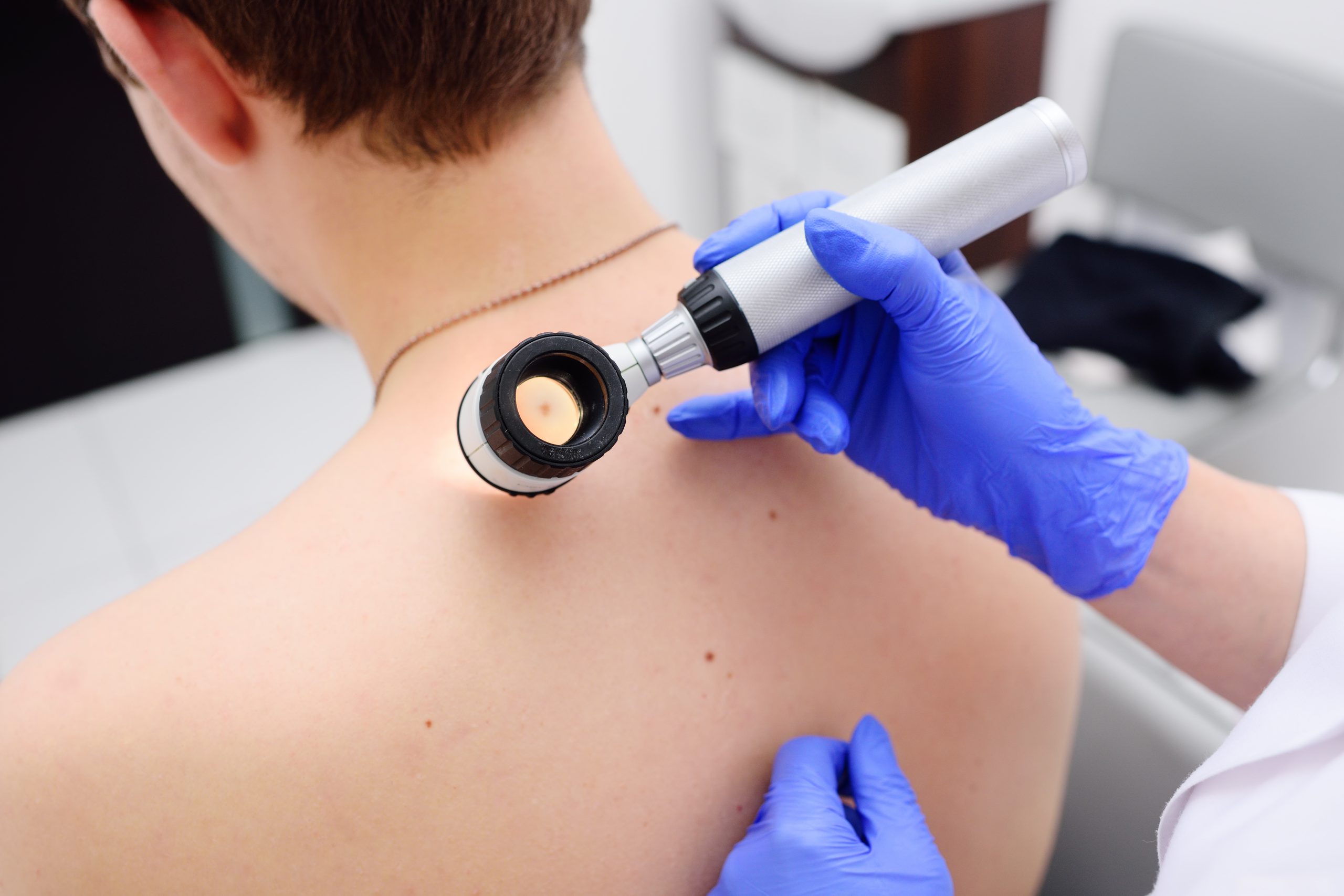Risk Factors for Developing Skin Cancer
Did you know that skin cancer is the most common cancer in both the United States and the world?
It’s true, and according to the Skin Cancer Foundation, “1 in 5 Americans will develop skin cancer by the age of 70.” Their findings display just how common the diagnosis of skin cancer is for Americans.
But thankfully, we’re not defenseless because there is plenty of research out there to help keep us protected, even for those who stand a higher risk of developing skin cancer.
In this article, we will discuss some common types of, risks factors for, and preventative measures against skin cancer!
Common Skin Cancers You Should Know
There are several types of skin cancer, and each type is associated with a different layer or layers of the skin. Some of the most prevalent forms of major skin cancer include the following:
- Basal Cell Carcinoma
- Squamous Cell Carcinoma
- Melanoma
According to The American Cancer Society, “[Basal cell carcinoma accounts for 8 out of 10 cases of skin cancer in the United States.” This type of cancer can spread to other parts of the body if left untreated. But thankfully, once identified by a dermatologist, basal cell carcinoma can often be removed.
While it may not be as prevalent as basal cell carcinoma, squamous cell carcinoma can be just as deadly if left untreated. The American Cancer Society states that “2 out of 10 [skin cancers reported] are squamous [cell] carcinomas.” Squamous cells are primarily responsible for shedding skin cells that the body replaces with new ones, and when they stop functioning properly, they can develop into skin cancer.
Although ranking as only the third most common type of skin cancer, melanoma is considered to be the deadliest of skin cancers. According to The American Cancer Society, “[Melanoma] is more likely to grow and spread to other parts of the body.” If left untreated Melanoma can easily become one of the most difficult skin cancer fights to overcome.
No matter how common, though, early detection makes a difference. Since each type of skin cancer is unique, people must be on the lookout for their various symptoms.
Symptoms You Should Watch For
Because there are three main types of skin cancer, there are a lot of symptoms to consider. But by frequently checking your skin, you can learn what is and is not normal. Some of the most common symptoms reported to the Mayo Clinic are as follows:
- Basal Cell Carcinoma
- A flat, flesh-colored, or brown scar-like mark
- A bleeding or scabbing sore that heals and returns
- Squamous Cell Carcinoma
- A firm red nodule
- A flat lesion with a crusty surface
- Melanoma
- A mole that changes color, size, or one that bleeds
- A painful lesion that itches or burns
- A large brownish spot with darker speckles
If you know your skin and what is normal for your body gives you the power to seek help with confidence. Even if you might not know at this moment, simply checking your body over to see any markings that seem unusual. Blemishes that have been reported to be reported to develop as Basal cell carcinoma develop on areas such as the face or neck. These markings can also appear anywhere on the body that is exposed to the sun.
The appearance of blemishes that are commonly associated with Squamous cell carcinoma also may appear in areas exposed to the sun. Cases of Squamous and Basal can be attributed to the sun, which is also a common cause for Melanoma cases.
Melanoma is most commonly associated with moles, now not all moles are a cause of concern. Some people have moles that are not cancer-related at all and are just beauty marks. The skin can have blemishes and markings that are completely safe.
However, if you see a mole on your neck or a red nodule on your arm, and there is a ray of doubt it was not there before then you should indeed schedule an appointment with a dermatologist.
Although all skin cancers can become deadly if left untreated since melanoma is the deadliest, The Centers for Disease Control and Prevention created what they call the “A-B-C-D-E-s” for melanoma:
- A for asymmetrical
- Does the mole or spot have an irregular shape with two parts that look very different?
- “B” for border
- Is the border irregular or jagged?
- “C” for color
- Is the color uneven?
- “D” for diameter
- Is the mole or spot larger than the size of a pea?
- “E” for evolving
- Has the mole or spot changed during the past few weeks or months?
In addition to being aware of potential symptoms, one other aspect of skin cancer is reducing potential hazards.
Factors You Should Consider
A large part of staying cancer-free is understanding possible risk factors, which increase the risk of skin cancer. Thankfully, the CDC has come up with a list of potential factors thought to heighten your risk of developing skin cancer. So for those who have any of the following, the CDC encourages extra caution:
- Lighter natural skin color
- Skin that burns easily or reddens
- Blue or green eyes
- Blonde or red hair
- Certain types of moles
- A family history of skin cancer
- Personal history with skin cancer
- Older age
Even if individuals do not possess one of the risk factors, it is strongly advised by experts to still be cautious of sun exposure and UV rays and seek professional help if they are at risk. Early screening and preventative measures are essential to staying cancer-free. But there are many preventive measures we can take.
In fact, there are plenty of ways to protect yourself from developing the disease of skin cancer. But some of the most common are related to sun protection:
- Reducing overexposure to the sun
- Wearing clothing that covers arms and legs
- Wearing a hat with a wide brim to cover your ears, face, head, and eyes.
- Wearing sunglasses
- Using sunscreen
- Avoiding tanning beds
- Checking the UV Index prior to going out
The CDC has provided a few guidelines above to how to reduce the chances of developing skin cancer. Even with skin cancer being the most common cancer, there are people who have overcome their diagnosis.
Next Steps
Dermatologists see patients with all different kinds of skin conditions, including those related to skin cancer. Thankfully, these individuals are equipped to treat such illnesses with care and efficiency.
If you have recently observed symptoms of skin cancer, don’t ignore them. And if you stand at an increased risk for developing skin cancer, get the help you need. Early detection often results in early prevention. Schedule an appointment with one of our expert dermatologists today.

